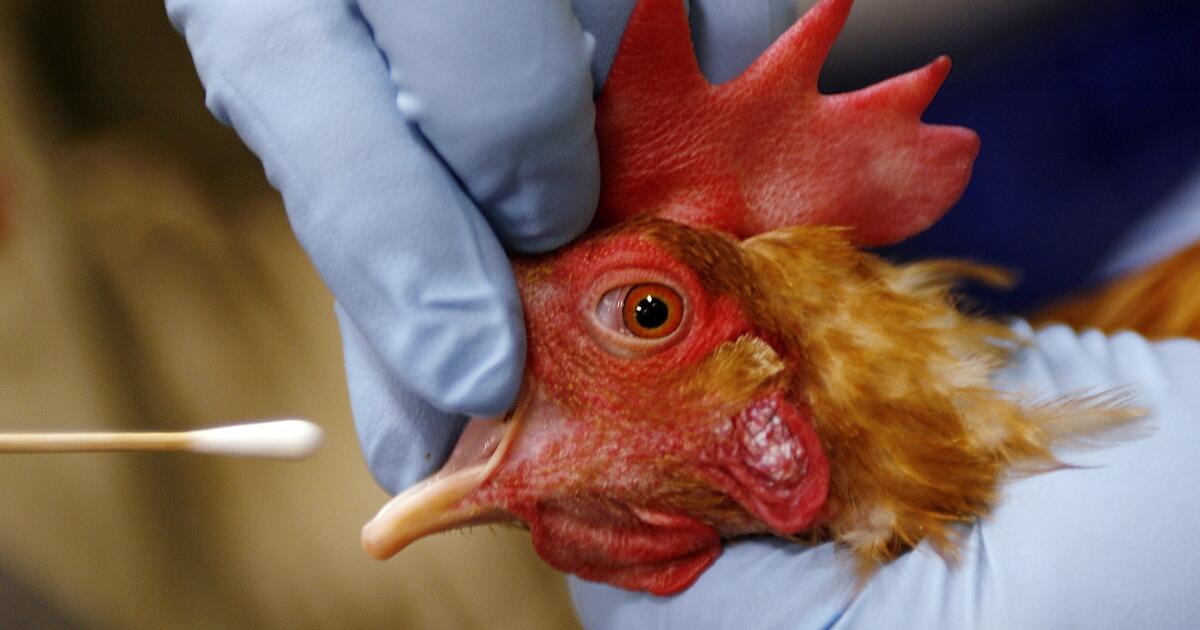World
France's right-wing National Rally looks to seize on recent electoral gains

With the ultimate outcome still up in the air, France’s fiercely anti-immigration National Rally and opponents of the long-taboo far-right party scrambled Monday to capitalize on an indecisive first round of voting in surprise legislative elections.
Round one on Sunday propelled the National Rally closer than ever to government but also left open the possibility that voters could yet block its path to power in the decisive round two. France now faces two likely scenarios in what promises to be a torrid last week of high-stakes campaigning.
Strengthened by a surge of support that made it the round-one winner but not yet the overall victor, the National Rally and its allies could secure a working majority in parliament in the final round next Sunday. Or they could fall short, stymied at the last hurdle by opponents who still hope to prevent the formation of France’s first far-right government since World War II.
RIVALS MOVE TO BLOCK FRANCE’S RIGHT-WING NATIONAL PARTY’S ELECTION MOMENTUM
Both scenarios are fraught with uncertainty for France and its influence in Europe and beyond.
“Just imagine the image of France — the country of human rights, the country of enlightenment — which suddenly would become a far-right country, among others. This is inconceivable,” said Olivier Faure, a Socialist who comfortably held onto his legislative seat.
The far right tapped into voter frustration with inflation and low incomes and a sense that many French families are being left behind by globalization. National Rally leader Marine Le Pen’s party campaigned on a platform that promised to raise consumer spending power, slash immigration and take a tougher line on European Union rules. Its anti-immigration agenda has contributed to many French citizens with immigrant backgrounds feeling unwelcome in their own country.
Getting 289 or more lawmakers in the 577-seat National Assembly would give Le Pen an absolute majority and the tools to force President Emmanuel Macron to accept her 28-year-old protege, Jordan Bardella, as France’s new prime minister.
Such a power-sharing arrangement between Bardella and the centrist president would be awkward and invite conflict. Macron has said he will not step down before his second term expires in 2027.
Getting close to 289 seats might also work for Le Pen. By promising posts in the government, she may win over enough new lawmakers to her side.
A National Rally government in France would be an additional triumph for far-right and populist parties elsewhere in Europe that have steadily carved out places in the political mainstream and taken power in some countries, including Hungary. Hungarian Prime Minister Viktor Orbán will hold the European Union’s rotating presidency for the next six months.
Supporters of French far right leader Marine Le Pen react after the release of projections based on the actual vote count in select constituencies , Sunday, June 30, 2024 in Henin-Beaumont, northern France. French voters propelled the far-right National Rally to a strong lead in first-round legislative elections Sunday and plunged the country into political uncertainty, according to polling projections. (AP Photo/Thibault Camus)
But the first round of the French vote was also sufficiently undecided to offer up the alternative possibility that France’s complex, two-round system could also leave no single bloc with a clear and workable majority.
That would plunge France into unknown territory.
However, Le Pen’s opponents still view that scenario as more appealing than victory for her party, which has a history of racism, xenophobia, antisemitism and hostility toward France’s Muslims — as well as historical ties to Russia and a more adversarial attitude toward the EU.
“We are faced with a ‘Trumpization’ of the French democracy,” warned lawmaker Sandrine Rousseau, an ecologist also reelected in round one. “The second round will be absolutely crucial.”
The election, made intense by the high stakes and compressed time frame, has overshadowed preparations for Paris to host the Olympic Games, which open in less than a month.
Candidates who did not win outright in round one but qualified for round two have until 6 p.m. Tuesday to decide whether to stay in the race or withdraw. By pulling out, opponents of the National Rally might divert votes to other candidates better positioned to beat the far right next Sunday.
Some candidates announced of their own accord that they were stepping aside, making a defeat of the National Rally their top priority. In other cases, party leaders set the direction, saying they would withdraw candidates in some districts in hopes of blocking Le Pen’s path to power. She inherited her party, then called the National Front, from her father, Jean-Marie Le Pen, who has multiple convictions for racist and antisemitic hate speech.
Overall, the National Rally and its allies won a third of the nationwide vote Sunday, official results showed. The New Popular Front, a left-wing coalition of parties that joined together in the quick, three-week campaign to beat the far right, got 28% and was followed in third place by Macron’s centrist camp with 20%. But the 577 seats are elected by districts. So while nationwide results provide an overall picture of how each camp fared, they do not indicate exactly how many seats the groups will get in the end.
Bardella urged voters to give him a majority, saying they face a choice between left-wing “incendiaries” who pose “an existential threat” to France and his party’s offer of a “responsible break” with Macron’s era.
Support for the National Rally and the New Popular Front was so strong that they both won more than 30 seats outright on Sunday by taking more than 50% of the vote in some districts. That means there will be no second round in those districts.
Turnout — at nearly 67% — was the highest since 1997, arresting nearly three decades of deepening voter apathy for legislative elections and, for a growing number of French people, politics in general.
Macron dissolved the National Assembly and called the snap election on June 9, after a stinging defeat at the hands of the National Rally in French voting for the European Parliament. The deeply unpopular and weakened president gambled that the far right would not repeat that success when the country’s own fate was in the balance.
But Macron’s plan backfired. He is now accused, even by members of his own camp, of having opened a door for the National Rally by calling voters back to the ballot box, especially when so many are angry over inflation, the cost of living, immigration and at Macron himself.
If the National Rally can form a government, it has promised to dismantle many of Macron’s key domestic and foreign policies, including his pension reform that raised the retirement age. It also says it would stop French deliveries of long-range missiles to Ukraine in the war against Russia.
National Rally opponents fear for civil liberties if the party takes power. It plans to boost police powers and curtail the rights of French citizens with dual nationality to work in some defense, security and nuclear-industry jobs. Macron himself warned that the far right could set France on a path to civil war.

World
UK general election: Voting under way in high-stakes poll
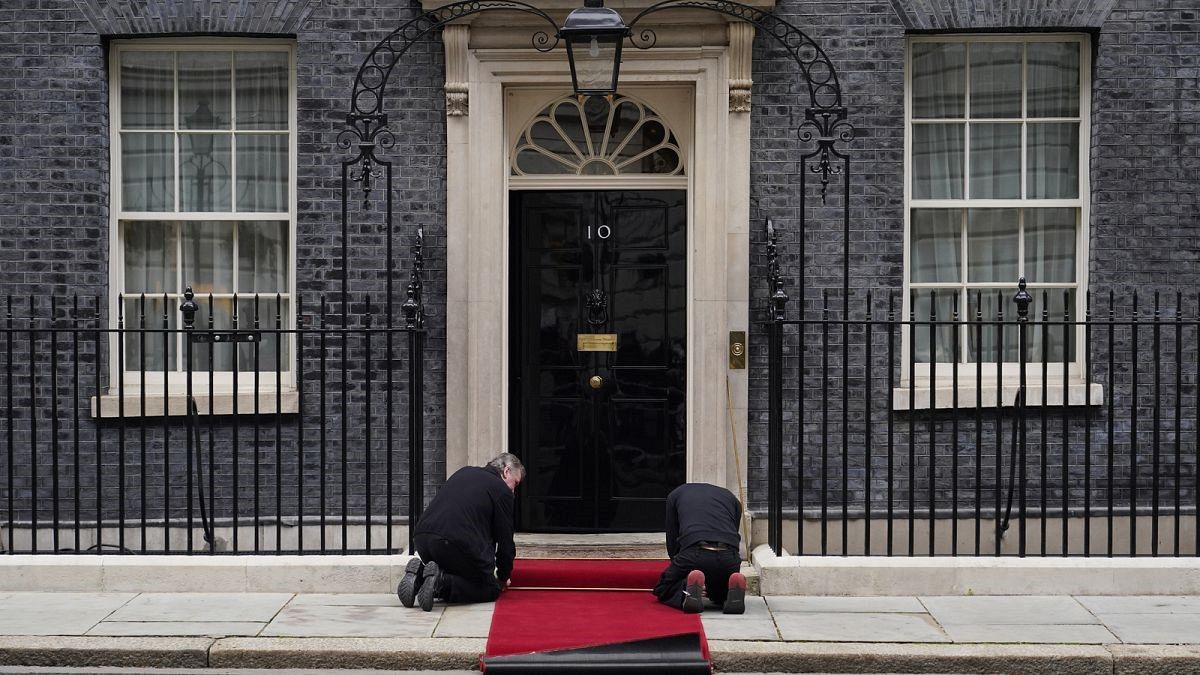
UK voters began registering ballots at polling stations at 7 am local time on Thursday morning, in the first UK general election since the country’s formal exit from the European Union. Stay up to date with the process with our live blog, bringing you the latest news until the final results tomorrow
The 650 seats in the House of Commons are up for grabs in an election that has already been forecast – even by some governing Conservatives – as likely to result in a Labour victory.
Conservative incumbent Prime Minister Rishi Sunak looks likely to be replaced by Labour leader Keir Starmer on the basis of polling leading up to the election.
We’ll track the day as it progresses and leaders of the key party factions vote, explaining how the voting system works and bringing up to the minute news as it trickles in.
Might the Tories suffer a historic defeat? Might the Liberal Democrats be able to seize a significant tranche of seats and claim as many seats the Conservatives in the new parliament? What will the result mean in Scotland, where Labour is looking to snatch influence from a scandal-stricken Scottish National Party? In Northern Ireland, will a changing political picture affect the future of the province and its delicate position straddling UK and EU politics.
Stay with us through to the first exit poll, which will be unveiled by British broadcasters at 11pm in Europe, and beyond as key results trickle through overnight and as leaders and commentators react to the unfolding drama.
World
The Conservatives Have Run Britain for 14 Years. How Has That Worked Out?

Since Britain’s Conservative Party took power 14 years ago, most things have not gone the way it planned.
The Conservative Party has dramatically reshaped Britain since 2010, orchestrating its exit from the European Union, slashing spending on public services and cutting welfare spending. Time and again, British voters have returned the party to power.
But Britons say their country is worse off now than when the Conservatives took office. Their dissatisfaction emerges on almost every issue they are asked about, from the economy to education to the National Health Service.
With the Conservatives facing the possibility of a crushing defeat in Thursday’s election, we took a look at how Britain has changed since they came to power. To do so, we chose the metrics that voters — and the party itself — say matter the most.
No single measure can capture the Britain of 2024, of course, but taken together, these metrics offer a snapshot of decline.
The Economy Has Stagnated
Average productivity growth has declined since 2010…
Source: Office for National Statistics. Note: 10-year rolling average.
… and average weekly earnings, when adjusted for inflation, are barely higher.
Source: Office for National Statistics
Britain’s economy has been stagnant ever since the 2008 financial crash, and the pandemic also hit it hard. Many of its peers, including Germany and the United States, managed to recapture pre-crisis levels of economic growth, but Britain never regained its momentum.
Productivity, a measure of economic output for every hour worked, was growing at about 2 percent per year in the decade before the financial crash. Since the Conservatives took power, it has grown by only about 0.5 percent per year.
One consequence of stagnant productivity is stagnant wages: The average British worker earns just £20 more per week than 14 years ago, after adjusting for inflation.
Austerity budgets explain a lot of the stagnation.
The new Conservative government, intent on reducing the deficit, cut deep and broad, slashing spending not just on party bugbears like welfare but also on public budgets for investment.
Following the vote to leave the European Union, private investment also ground to a halt amid economic uncertainty. The U.K. has the lowest rates of investment among G7 countries, according to the Institute for Public Policy Research, a think tank based in London.
The Conservatives took power bemoaning the “debt crisis” and saying deep cuts were necessary to reduce the public debt. But even after a decade of austerity, it continued to rise, and then jumped sharply because of the pandemic.
Source: Office for National Statistics
Britain’s debt as a share of G.D.P. has ballooned since 2010
The Conservatives also positioned themselves as a party of low taxation, pledging to reduce taxes in every election manifesto since 2010. The opposite happened.
Source: Office for Budget ResponsibilityTaxation as a share of G.D.P. has risen to its highest level in 70 years
More people have been dragged into higher tax brackets, and those at all income levels were hit when the nationwide sales tax was raised to 20 percent from 17.5 percent.
The Conservatives argue that the taxation is needed to reduce debt and cover the cost of measures introduced to counter economic shocks like the pandemic and the energy price crisis tied to the war in Ukraine.
The party did fulfill one of its pledges.
Unemployment has roughly halved since 2010, when the U.K. was just emerging from recession. Conservative policy makers argue that their welfare changes, aimed at making benefits less attractive and employment more rewarding, motivated people to return to the workforce. Some researchers found that the changes did modestly encourage people to work.
Public Services Are Struggling
More than 7.5 million people are now waiting for hospital treatment…
Source: N.H.S. England
… and the share of cancer patients who start treatment within two months is at a record low.
Source: N.H.S. England
The picture the Conservatives painted of Britain in 2010 was of a country living beyond its means. They detailed £6.2 billion, or about $9 billion, of spending cuts within their first two weeks in office, and severe cuts continued for the next decade.
Fourteen years later, despite record debt and the highest tax burden in 70 years, many of Britain’s public services are greatly diminished.
Local councils, which run services like social care, libraries, waste management, and local infrastructure, bore some of the deepest cuts, with their spending power dropping almost 30 percent by 2019.
Even the National Health Service, which was ring-fenced from cuts, has been under intense pressure. Its budgets have not risen in line with the increasing demands of Britain’s aging population, and cuts to the social care sector forced more vulnerable people into hospitals.
Britons rank health care as the second-most-pressing issue facing the country. Going into the election, four times as many voters believe Labour is better placed to manage the National Health Service as the Conservatives.
Outside the N.H.S., almost no department was spared from cuts. Troop numbers in the armed forces were reduced by more than 40,000.
Policing was also cut significantly, but during the 2019 election Boris Johnson pledged to stand for the “law abiding majority” and restore the 20,000 police officers that had been lost — a promise he fulfilled.
Source: House of Commons Library
Source: House of Commons LibraryThe number of armed forces personnel has been reduced by 44,000…
… but the number of police officers has rebounded, after dropping for a decade.
Record Levels of Immigration, Despite Conservative Pledges
The Conservatives vowed to reduce net migration, but it reached a record high.
Source: Home Office
The Conservative party long promised to reduce immigration, and the pledge to “take back control” of Britain’s borders was one of the top reasons many Britons voted to leave the European Union.
But legal immigration has soared in recent years. Net migration — the number of people who moved to Britain minus those who left — reached 764,000 in 2022, almost three times as high as when votes were cast for Brexit.
The migration spike in 2022 was largely driven by specific events, and it has already shown signs of subsiding. Some of the increase was likely migration delayed by the pandemic, and hundreds of thousands of Ukrainians, Hong Kongers and Afghans all fled to Britain on humanitarian visa programs.
Much of the debate around migration is being driven by record numbers of small-boat crossings across the channel, even though they only account for about 2 percent of migration to the U.K.
A huge backlog of unresolved asylum claims has grown under the conservatives. Prime Minister Rishi Sunak has promised to send people seeking asylum to Rwanda for resettlement, but those flights have been delayed by court challenges.
Source: Home Office
The asylum backlog peaked when more than 130,000 people were waiting to have their claim processed.
Two-thirds of Britons think immigration is too high, and the disconnect between the Conservatives’ tough talk on immigration and the record levels of migration has opened the party up to attacks from the hard right.
Increases in homelessness, hunger and student debt
The Trussell Trust, a charity, distributed more than 3 million emergency food parcels last year…
Source: Trussell Trust
… and thousands more people are sleeping on the streets than in 2010.
Source: Department for Leveling Up, Housing and Communities
The Conservatives tightened up significant parts of Britain’s welfare system, introducing a two-child limit to child welfare payments, stricter limits for disability benefits and a freeze on working-age benefits for four years.
At the same time, food bank use has skyrocketed. A third of the food parcels distributed by the Trussell Trust last year went to children.
Housing prices have risen dramatically, and an annual survey also found increasing numbers of people sleeping on the streets. Although the number dipped during the pandemic, when the government moved many homeless people into hotels and temporary accommodation, it is now steadily rising toward record levels again.
The problem is stark in many cities now, where the combination of little affordable housing and reduced support services have left many without a safety net.
The cuts have reshaped all aspects of British life, but especially for young people. The Conservatives’ legacy for many of them will be defined by their rising student debt.
The government cut funding for universities and tripled tuition fees to plug the funding gap, meaning the average student now graduates with about £45,000 of student loan debt.
Source: Student Loans Company
Source: Higher Education Statistics Agency
Graduate debt by the time they leave university is three times as high as in 2010…
… but more people than ever are attending university.
The overall crime rate peaked in the mid-90s, driven by increases in violence, vehicle crime and burglary, but it has declined ever since. From 2010 to 2023 it dropped by a further 54 percent.
Despite Mr. Sunak’s recent moves to roll back the reduction of carbon emissions, the country his party leaves behind is greener than the one it inherited: Britain is generating 60 percent less electricity from fossil fuels now than it was in 2010.
Methodology
These metrics represent the issues British voters say are most pressing in polls by YouGov. Data for the entire United Kingdom was used when available. Some metrics apply only to England.
To show how these measures have changed over the Conservatives’ time in office, we calculated the percentage change of each metric between 2010 and the latest available data. The first chart, which shows all metrics and their percentage change, is plotted on a logarithmic scale. Each metric “improved” or “worsened” compared to what the Conservatives would want, based on the party’s pre-election pledges and average voter sentiment about each issue. For example, two-thirds of Britons believe net migration is too high.
Data sources
Food bank use The number of food parcels handed out by The Trussell Trust, the largest food bank operator in Britain. Source: The Trussell Trust. Data covers the United Kingdom.
Graduate debt The average student loan balance at the time of graduation, including interest. Source: Student Loans Company. Data covers England.
Asylum backlog The number of asylum applications awaiting an initial decision. Source: Home Office, Migration Observatory. Data covers the United Kingdom. Hospital waiting lists The number of people waiting for consultant-led elective care in English hospitals. Source: N.H.S. England. Data covers England.
Homelessness The number of people estimated to be sleeping on the streets on a single night. Source: Department for Leveling Up, Housing and Communities. Data covers England.
Net migration The number of people moving to the U.K. minus the number of people who left. Source: Home Office. Data covers the United Kingdom.
Productivity growth The 10-year trailing average of annual productivity growth. Source: Office for National Statistics. Data covers the United Kingdom.
Local government budgets The median change in spending power, a government estimate of the amount of money that local authorities have available to take decisions. Source: House of Commons Library. Data covers England. Timely cancer treatment The share of patients starting treatment within 62 days of a referral by their doctor. Source: N.H.S. England. Data covers England.
Knife crime The number of violent and sexual offenses involving a knife or sharp instrument recorded by the police. Source: Office for National Statistics. Data covers England, excluding Greater Manchester.
Government debt The debt of the public sector, excluding public sector banks, as a percentage of G.D.P. Source: Office for National Statistics. Data covers the United Kingdom.
Taxes The percentage of the country’s G.D.P. that is collected in taxes. Source: Office for Budget Responsibility. Data covers the United Kingdom.
Number of troops Number of fully trained full-time personnel in the armed forces. Source: Ministry of Defence via FullFact. Data covers the United Kingdom. Average weekly earnings The average amount of money that people earn per week, adjusted for inflation. Source: Office for National Statistics. Data covers Great Britain.
Number of police The full-time equivalent number of police officers. Source: House of Commons Library. Data covers the United Kingdom.
University enrollment The number of undergraduate and postgraduate students. Source: Higher Education Statistics Agency. Data covers the United Kingdom.
State pension value The value of the basic state pension, adjusted for inflation. Source: Department for Work and Pensions. Data covers Great Britain.
Unemployment The number of unemployed people in the U.K., aged 16 and over, as measured by the Labor Force Survey. Source: Office for National Statistics. Data covers the United Kingdom. Crime Includes a range of personal and household crimes such as theft, robbery, and criminal damage. It excludes fraud and computer misuse. Source: Crime Survey of England and Wales. Data covers England and Wales.
Energy from fossil fuels The amount of electricity produced from oil, gas and coal. Source: Our World in Data. Data covers the United Kingdom.
World
Mexico evacuates turtle eggs from beaches as Hurricane Beryl approaches
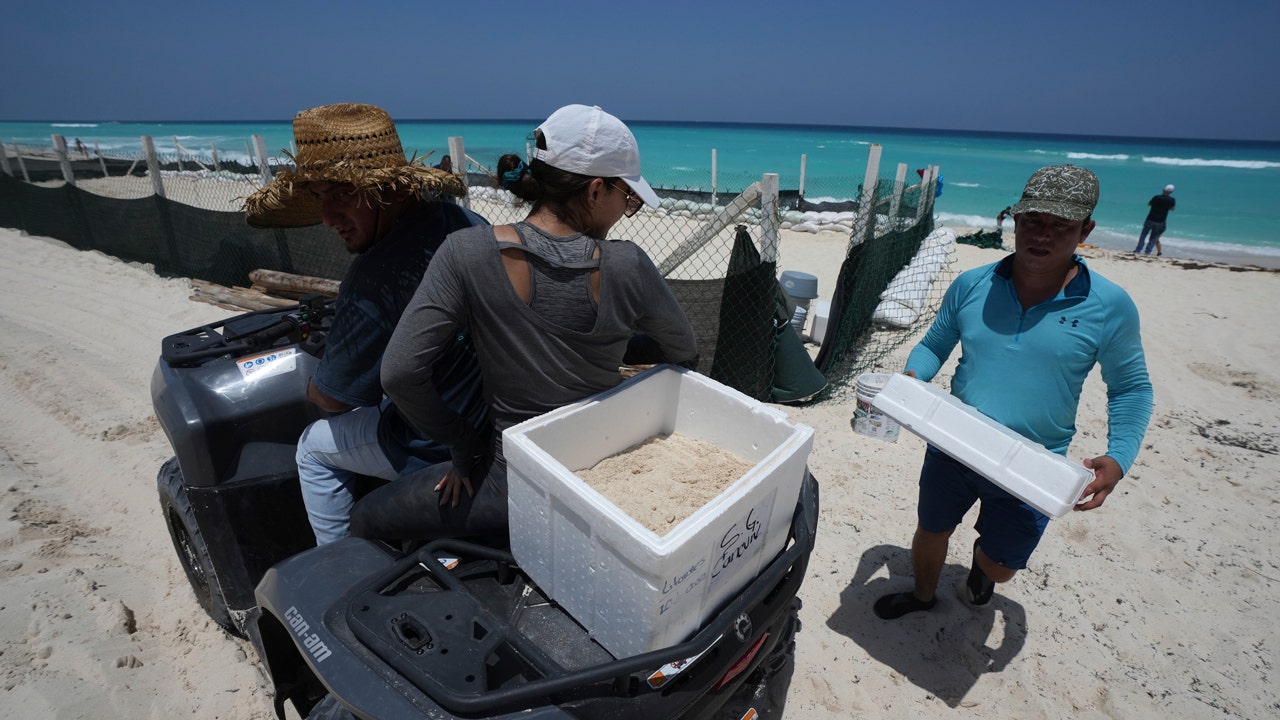
Stung by past failures to prepare for hurricanes, the Mexican government on Wednesday began evacuating even sea turtle eggs from beaches ahead of incoming Hurricane Beryl.
While Beryl remains far offshore in the Caribbean near Jamaica, it is expected to hit somewhere south of Cancun by late Thursday or early Friday.
Given that Mexico did so little to warn or evacuate residents of the Pacific coast resort of Acapulco during Hurricane Otis in October, this time around officials are being extra cautious, digging up recently-laid sea turtle eggs for fear they could be washed away by the storm surge.
HURRICANE BERYL: NEWLYWEDS AMONG AMERICAN TOURISTS STUCK IN JAMAICA AS STORM HITS
Government employees kept the carey sea turtle eggs covered with sand in dozens of coolers while transferring them to safer spots.
In other areas, they used sand-bag barriers to create safe “corrals” to protect turtles nests against the expected strong waves.
Biologist Graciela Tiburcio, one of Mexico’s foremost sea turtle experts, said it was an extreme measure that might cause some excess failure to hatch among the turtle eggs.
“Look, it’s not the best thing to do, but we are facing an emergency in which if they don’t take them out, they all could be lost,” said Tiburcio, who was not involved in the effort.
Several species of sea turtles come ashore in and around Cancun to lay their eggs in the sand, where hatchlings will emerge a few weeks later and crawl into the sea. Normally, people are told not to disturb the nests, because the sand keeps them at the ideal temperature for hatching.
Moreover, sea turtles are believed to use the natural light on the beaches to orient themselves, and in many cases, return to the same spot themselves after they become adults.
State employees evacuate turtle eggs from the beach to protect them from the incoming Hurricane Beryl, in Cancun, Mexico, Wednesday, July 3, 2024. (AP Photo/Fernando Llano)
But Beryl’s waves and storm surge could simply sweep them out to sea, where they couldn’t hatch.
“In a normal situation this would not be right, because this will surely cause mortality,” said Tiburcio. “There will be a lower rate of hatched eggs, that is the reality. But it’s also a reality that if the nests are left there, they’ll all be lost.”
The Cancun municipal environment department did not immediately respond to requests for comment on where the turtle eggs were being taken for safekeeping. But in a social media post, the office said it had dug up over 10,000 eggs from around 93 nests.
Carey turtles, like all sea turtles, are protected species in Mexico and removing their eggs — which were once widely eaten — is prohibited.
It’s not just turtles: further south in the Caribbean coast, in the fishing village of Punta Allen, soldiers, police and marines were strongly pressing the 700 inhabitants to completely evacuate their homes.
Punta Allen is located on a narrow spit of land south of the resort of Tulum.
One resident of Punta Allen who asked to remain anonymous said many residents, about half the population, were resisting the calls to evacuate.
“They’re asking everyone to get out of Punta Allen … but people don’t want to leave,” she said. “They don’t have any money and they don’t want to leave their possessions.”
Moreover, the woman said, the government offers free transportation out, but doesn’t give people rides back once the hurricane is over.
Many in Mexico have long distrusted the government’s disaster preparedness efforts, because officials often don’t enforce zoning and safety rules, and do little before the storms.
Acapulco is still struggling to recover after being hit by Category 5 Hurricane Otis in October. Otis left at least 52 dead and destroyed or damaged most hotels.
-
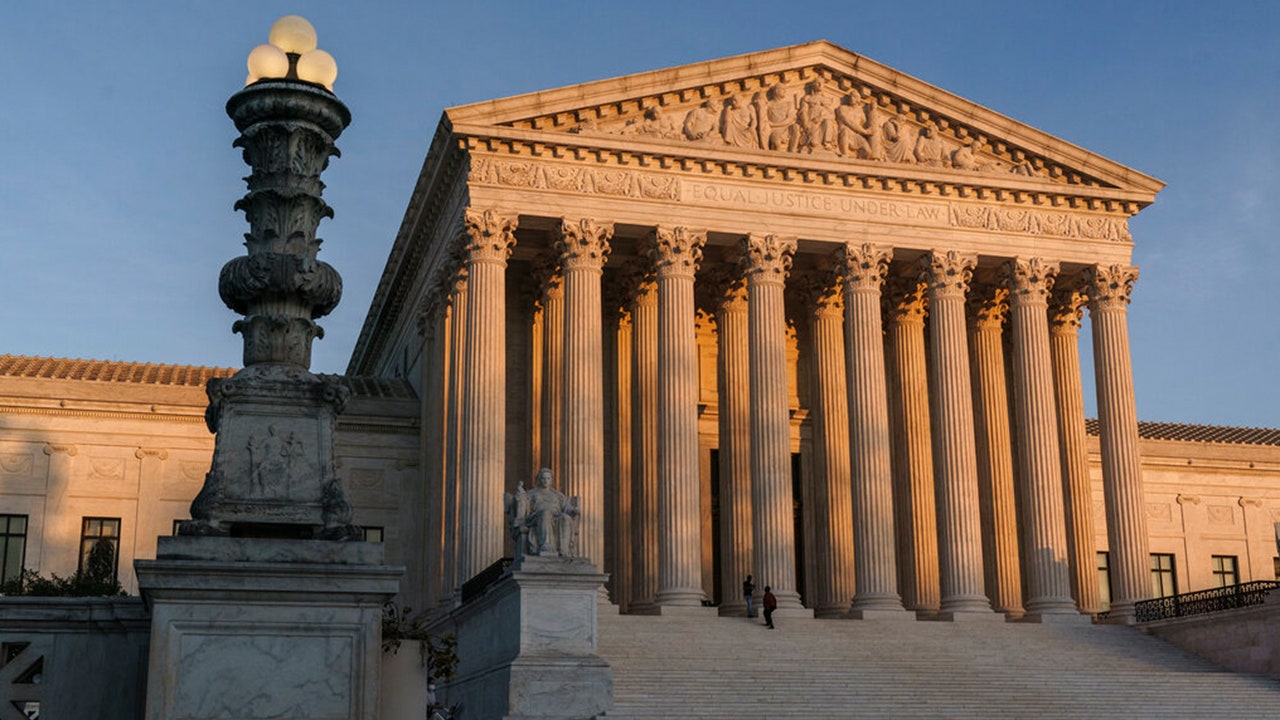
 Politics1 week ago
Politics1 week agoSupreme Court to review Tennessee ban of puberty blockers, transgender surgery for minors
-

 News1 week ago
News1 week agoSupreme Court to decide whether states can restrict gender-affirming care for minors | CNN Politics
-

 World1 week ago
World1 week agoFar-right politician back in German court over use of Nazi slogan
-
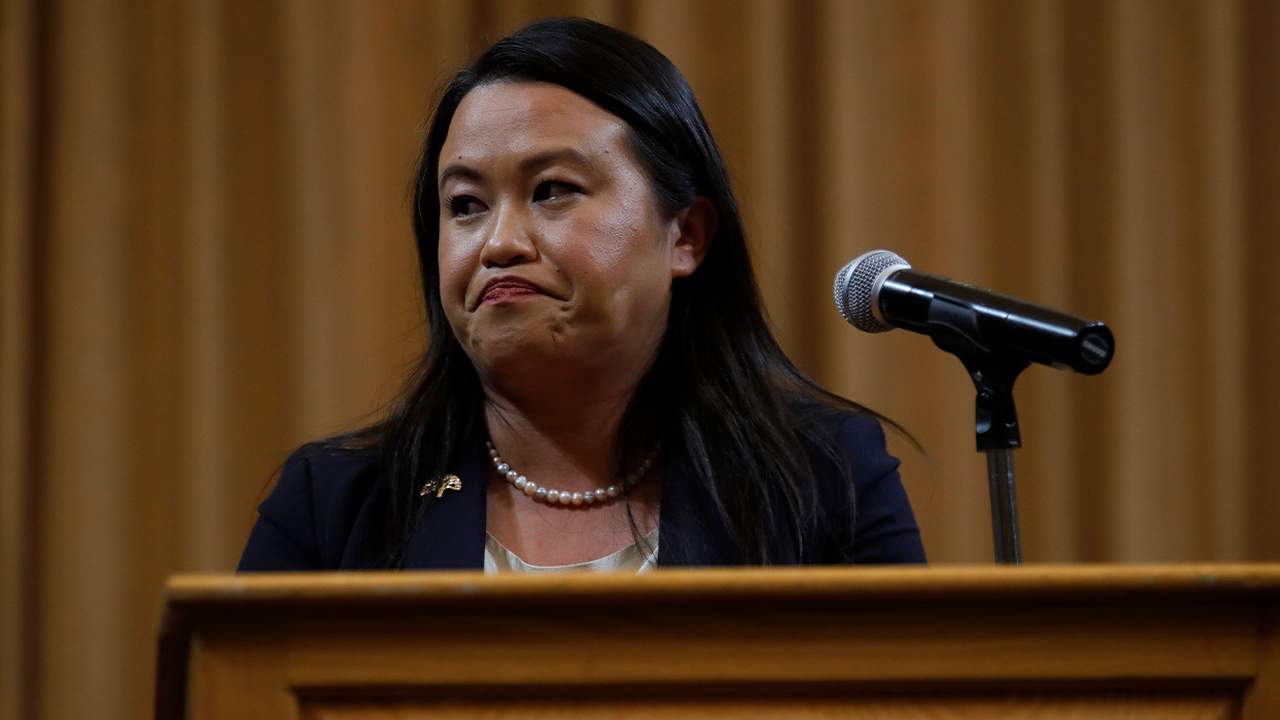
 Politics1 week ago
Politics1 week agoOakland mayor breaks silence after FBI raid: ‘I have done nothing wrong’
-

 News1 week ago
News1 week agoWhere Joe Biden and Donald Trump Stand on the Issues
-

 Politics1 week ago
Politics1 week agoPopular Republican and Trump running mate contender makes first Senate endorsement in 2024 races
-

 News1 week ago
News1 week agoToplines: June 2024 Times/Siena Poll of Registered Voters Nationwide
-

 Movie Reviews1 week ago
Movie Reviews1 week agoMovie review: Thelma thieves and steals your heart
